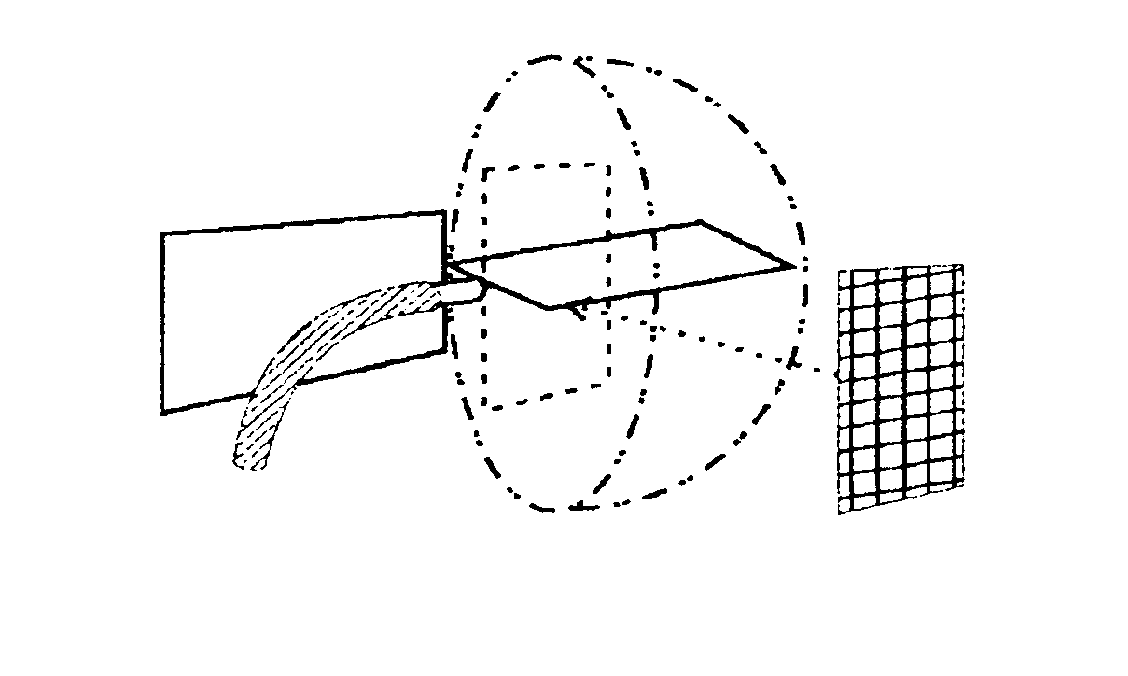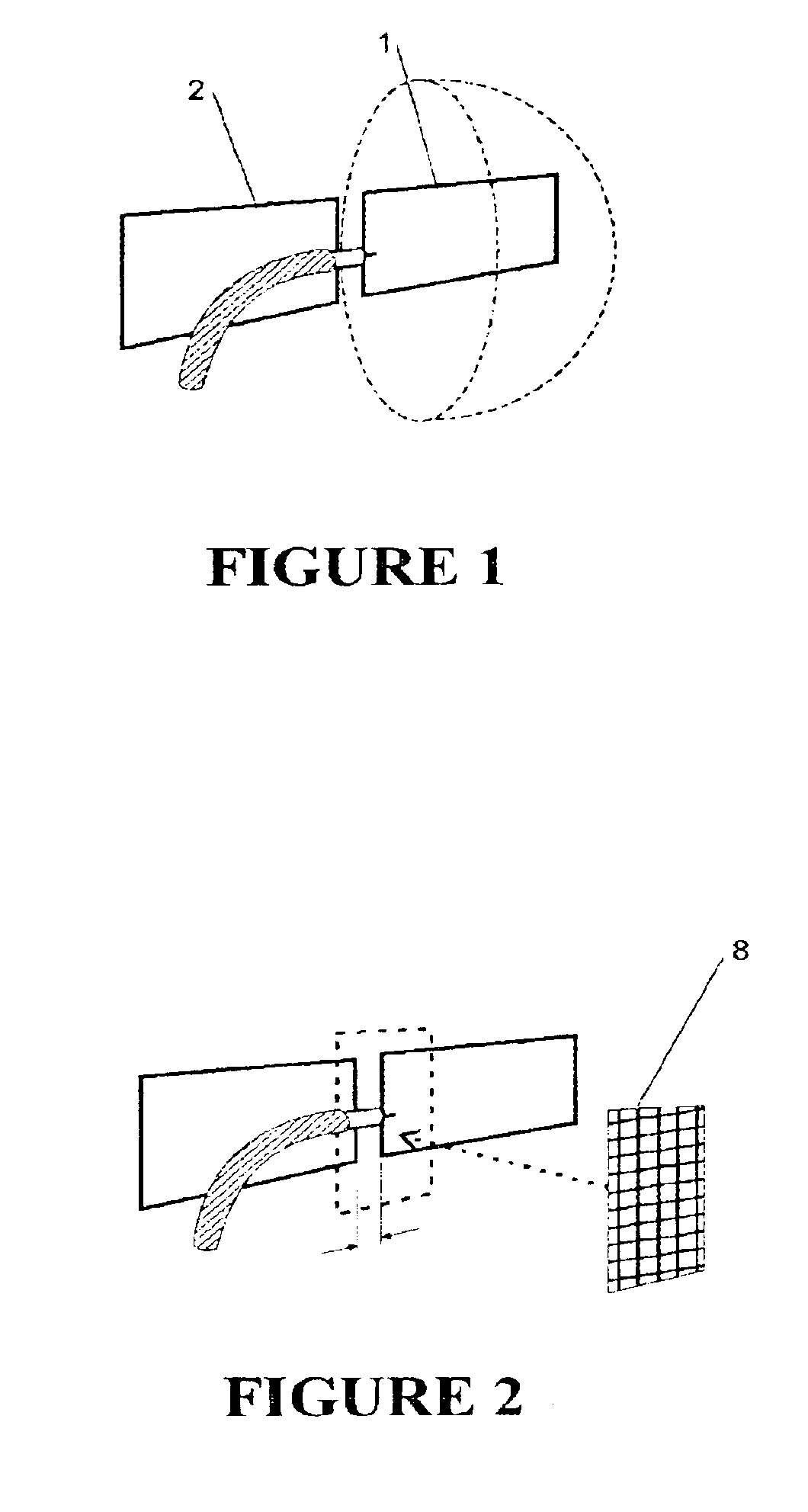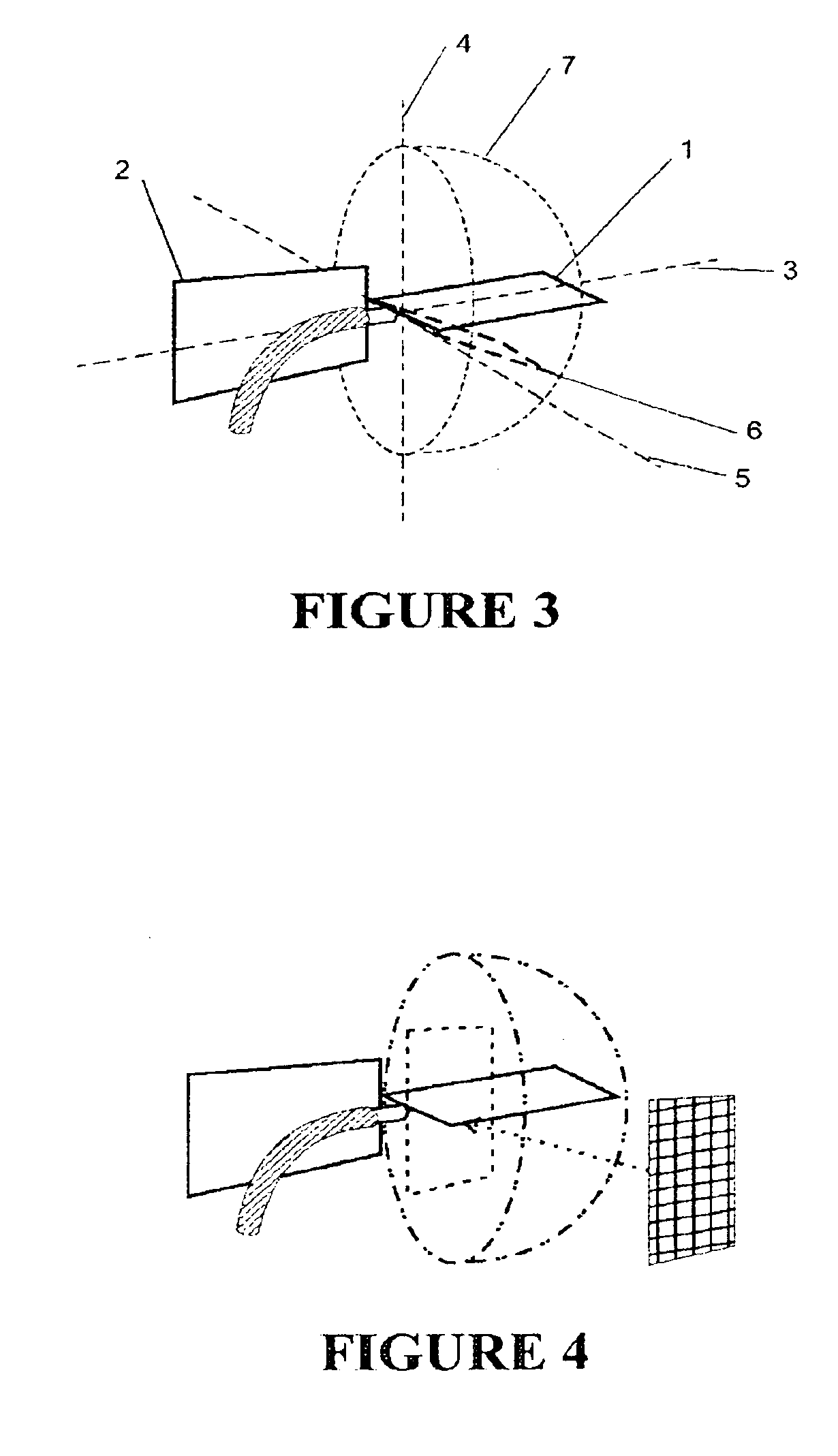Plate dipole antenna
a dipole antenna and plate technology, applied in the field of dipole antennas, can solve the problems of increasing the gain of a dipole, less acceptability of a dipole, and not being able to use a dipole at all
- Summary
- Abstract
- Description
- Claims
- Application Information
AI Technical Summary
Benefits of technology
Problems solved by technology
Method used
Image
Examples
Embodiment Construction
[0029]The antenna of FIG. 1 includes a pair of plates 1, 2 forming a dipole antenna. The plates are connected electrically or inductively to either a cable screen or a core. The plates of the antenna shown in FIG. 1 are rectangular but other shaped plates may be used within the definition of plate given above. The plates of the antenna of the invention are arranged in substantially the same plane.
[0030]As shown in FIG. 1 the plates of the antenna have a width to length ratio of greater than 1 to 10 where the longer plate dimension is the length and the shorter plate dimension is the width. Where the plate dimensions are not regular or other dipoles, skeletons etc have been attached to the plates, then different length and width measurements are used. If there are no additions to either plate of the pair then the length is the maximum length of the longest side of the plate and the width is the maximum width of the side of the plate perpendicular to the length. Should the plate lengt...
PUM
 Login to View More
Login to View More Abstract
Description
Claims
Application Information
 Login to View More
Login to View More - R&D
- Intellectual Property
- Life Sciences
- Materials
- Tech Scout
- Unparalleled Data Quality
- Higher Quality Content
- 60% Fewer Hallucinations
Browse by: Latest US Patents, China's latest patents, Technical Efficacy Thesaurus, Application Domain, Technology Topic, Popular Technical Reports.
© 2025 PatSnap. All rights reserved.Legal|Privacy policy|Modern Slavery Act Transparency Statement|Sitemap|About US| Contact US: help@patsnap.com



